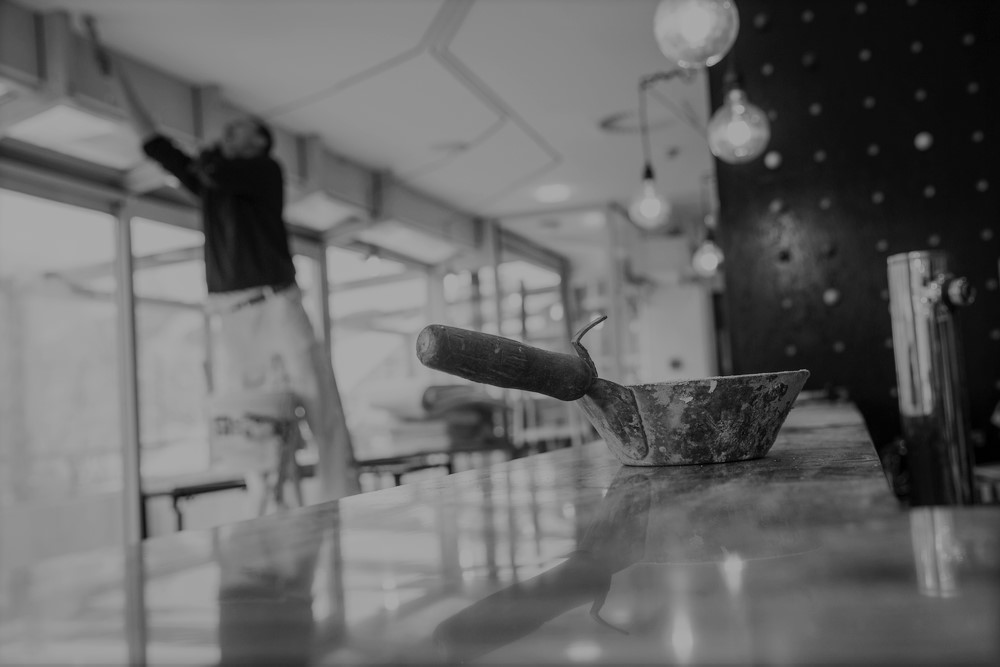Restaurant Start-Up SOS
Originally Posted on FoodableTV – By Doug Radkey 03/15/2017
Outside of preparing for hidden costs and understanding strategies to save time and money during start-up, there are many other factors that can make an aspiring restaurateur scream “SOS” on or before the day one opens their doors.
One word that cannot be stressed enough during this phase is, of course, planning. Sometimes, however, even with a high level of planning in place, things can unfortunately go sideways for some — and they can happen fast.
The good news is that you can try and stay ahead of the most common problems with these five SOS-related problems and solutions!

Property Surprises
Problem Area: One of the most frequent problems that arise is found within your property choice. New restaurateurs often find out after a lease is signed that their property may not be fully compatible for a restaurant and will need further upgrades to meet standards for energy, ventilation, and revised building and/or health codes.
Solution: Have a commercial inspector walk through the property with you before signing your lease, looking at common areas for mold and leaks (water and air), in addition to the most updated building codes and food-service-related health codes needed to operate. Secondly, within your concept development plan, list out your priority pieces of equipment and their specs, including the energy consumption they will use. This step will help you understand if you will need to upgrade electrical panels or gas lines, while not forgetting about your hood system and ventilation needs. Thirdly, if you have immediate neighbors, it’s ideal to understand their concept, operating hours, and the acoustics within the walls separating the units. Will interior noise levels affect either your business or theirs? Make sure this is planned and budgeted for, if upgrades are needed.
Inevitable Delays
Problem Area: Many start-up projects see at least one — or even a variety of — delays with building permits, material suppliers, and/or contractors. These delays will slowly eat away at your cash flow, create a heightened level of stress, and of course, extend your ideal opening day.
Solution: Mentally and physically prepare for it. Learn the average time for building permits to get approved in your area, and then add 1-2 weeks to that time frame. Meet with your flooring, lighting, and wall finishing supplier, as well as your hood system, kitchen equipment, mill-worker, and furniture suppliers before construction begins. This step will position you to find out their specific lead times required to produce, organize, deliver, and/or install. This all needs to be coordinated with your contractor and then laid out in an organized project management Gantt chart which shows activities (tasks or events) displayed against time.
Quitting Chefs
Problem Area: A scenario that, believe it or not, happens more often than it should is a chef who quits before opening day or shortly there-after. This situation will leave a restaurateur scrambling and leave a question of doubt among you and your other hired team members.
Solution: Before hiring your chef (if you’re not a chef inspired owner) or even before hiring your other team members, make sure your four key statements (Value, Vision, Mission, Culture) are completed. Equally, before hiring your chef, management, and other key staff, make sure your menu concept is completed and you show them the plans for the kitchen and bar space, the size of team they will lead, the wage structure, and overall growth plans. In summary, be 100 percent transparent so there are zero surprises, which is often the main reason a restaurant loses its key start-up staff.
Strapped Cash
Problem Area: Approximately 7 out of 10 start-ups face crucial financial decisions before opening their doors, sometimes (sadly) even leading to the doors not opening at all. Outside of possible delays strapping ones cash, some owners begin losing sight of their budget because they want the best of the best for the interior design of their concept.
Solution: Going hand-in-hand with preparing for hidden costs and delays, what can you do to avoid cash-flow problems? It’s imperative that concept development plans, business plans, and start-up budgets are in place and you’ve accounted for a variety of hidden costs. To reduce a significant portion of your start-up costs, consider leasing your equipment or taking over an existing foodservice space to leave further financial room. Secondly, as an owner, it is important to balance what is most critical to your concept and balance those interior element costs. Have your start-up budget updated on a weekly basis to hold yourself — and your supporting start-up team — financially on track and accountable.
No Customers?
Problem Area: Opening day has finally arrived! The renovations are complete, everyone is excited, and the hired team is trained and ready. You open your doors and only a few customers trickle in, leading to more questions and doubt. What happened?
Solution: The adage of “if you build it, they will come” sadly doesn’t exist in the restaurant industry. With a marketing and advertising plan, a startup needs to create buzz long before opening day. You must engage with the community prior to opening day through a launch day strategy plan. As a start-up restaurateur, you need to develop a strong budget for this category and keep it locked away and off to the side from your other expenses.
One of the main reasons this problem area occurs is that the startup needs to dive into the marketing category to pay for other equally important financial categories because of hidden costs in property surprises, inevitable delays, and re-hiring of staff.
Starting a restaurant, bar, or cafe takes a level head and plenty of research, organization, and financial planning. Use these startup SOS tips to stay ahead of the game!
